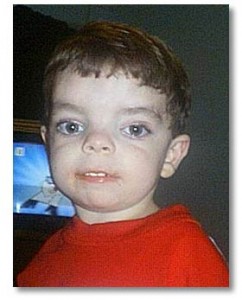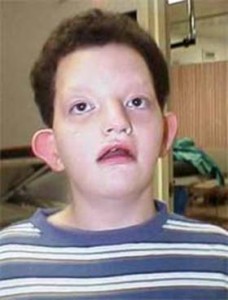What is Aarskog Syndrome?
Page Contents
It is an extremely rare genetic disorder which affects the height, muscles, skeleton, genitals and also the facial appearance of a person. It causes facial abnormalities, skeletal and genital anomalies since it causes changes in the size and shape of certain bones and cartilage in the body. The face, toe and fingers are the most affected.
Aarskog Syndrome Causes
The condition results from a mutation in the gene which resides in the X chromosome. It is, thus, passed on from mothers to male children. Females are affected by a milder form of the disorder.
The condition occurs when mutations or changes in the FGD1 are found. The FGD1 directs for production of protein which turns on another protein called Cdc42. This second protein element transmits signals which are important for several aspects of embryonic development. Changes in the FGD1 gene result in the production of an abnormally functioning protein. These changes disrupt the Cdc42 signalling which is the actual reason behind such wide variety of abnormalities as in Aarskog Syndrome.
Aarskog Syndrome Symptoms
The disorder is characterized by varied symptoms, as listed below:
Growth Issues
- Mild or moderately short height by 1- years of age.
- Delayed adolescence growth spurt.
- Slightly low to moderate dull mental capability.
- Inability to concentrate and hyperactivity.
- Delayed formation of teeth.
- Downward slant of the eye slits.
- Rounded face.
- Impaired development of the mid section of the face.
- Wide set of eyes.
- Hairline resembling the peak of a widow.
- Crease below the lower lip.
- Droopy eyelids.
- Small nose with nostrils tripped forward.
- Slightly folded top portion of the ear.
- Wide groove above the upper lip.
- Protruded navel.
- Bulging groin or scrotum.
- Malformation of scrotum.
- Mildly sunken chest.
- Small broad hands and feet with short fingers with the fifth finger curved in.
- Single crease in the palm of the hand.
- Short fingers and toes, with mild webbing of skin between two digits.
Level of Activities
- Slightly low to moderate dull mental capability.
- Inability to concentrate and hyperactivity.
Facial Abnormalities
- Delayed formation of teeth.
- Downward slant of the eye slits.
- Rounded face.
- Impaired development of the mid section of the face.
- Wide set of eyes.
- Hairline resembling the peak of a widow.
- Crease below the lower lip.
- Droopy eyelids.
- Small nose with nostrils tripped forward.
- Slightly folded top portion of the ear.
- Wide groove above the upper lip.
Body Abnormalities
- Protruded navel.
- Bulging groin or scrotum.
- Malformation of scrotum.
- Mildly sunken chest.
- Small broad hands and feet with short fingers with the fifth finger curved in.
- Single crease in the palm of the hand.
- Short fingers and toes, with mild webbing of skin between two digits.
Aarskog Syndrome Diagnosis
Diagnosis involves doctors taking a note of the symptoms and medical history of sufferers. A physical examination is conducted. The diagnosis of this disorder is done on the basis of the facial characteristics. X-Ray examination is conducted to examine the skull and the facial structure. The diagnosis is confirmed by performing genetic tests. Genetic tests reveal whether the FGD1 gene is mutated.
Aarskog Syndrome Treatment
Aarskog Syndrome cannot be cured in a non-invasive way. The treatment of this condition usually involves surgical processes. Orthodontic treatment is often opted for and it is found to be successful in most of the cases. It helps in treating facial and dental abnormalities. Surgery is done to treat conditions like inguinal hernia, cleft lip or palate and undescended testicles. Supportive treatment follows after surgery for those who have mental deficiencies. Educational assistance is offered to such people. Parents often need advice and guidance.
Aarskog Syndrome Complications
The disorder is associated with a few complications, which include:
- Cystic alterations in the brain.
- Poorly aligned teeth.
- Seizures.
- Growth difficulties in the early years of life.
- Condition of ‘shawl’ scrotum or undescended testicles.
Aarskog Syndrome Prevention
There is no way that this syndrome can be prevented. However, if you find that your child is experiencing delayed growth or symptoms of this disorder, you should immediately contact a medical expert to avoid possible complications at a later stage. Consult a genetic counselor if you have a family history of this condition.
Aarskog Syndrome Pictures
Here are a few images to help you take a look at sufferers of this syndrome.
Picture 1 – Aarskog Syndrome
Picture 2 – Aarskog Syndrome Image
References:
http://ghr.nlm.nih.gov/condition/aarskog-scott-syndrome
http://www.nlm.nih.gov/medlineplus/ency/article/001654.htm
http://en.wikipedia.org/wiki/Aarskog%E2%80%93Scott_syndrome
http://www.med.nyu.edu/content?ChunkIID=22572


